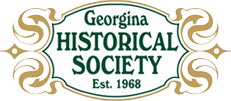Click to Download the PDF
Download the Word Doc
President’s Message
Welcome to the February 2021 newsletter of the Georgina Historical Society. February is the shortest month of the year, but this year you might have felt it was the longest. The last week of February usually brings warmer days and cold nights and with that temperature change the Maple sap begins to run. There’s nothing like the smell of maple syrup boiling over a wood fire to remind you that winter is almost over and spring is on its way. It looks like it will be a while yet before we are able to resume our regular meetings. However, with lower Covid rates and the vaccinations becoming available, hopefully we can soon return to our normal activities.
This newsletter contains an update on the Johnston Cemetery in Pefferlaw from Karen Wolfe. Please take time to send your objections regarding the application to close the cemetery and the moving of the bodies to the Registrar of Burial Sites for Ontario. Paul Brady has written a very interesting article on Jacksons Points “hidden historical gem”, the marine railway. A must read! You will also enjoy Melissa Matt’s article on the Vanderburg Harness Shop in Baldwin. If you have any pictures, postcards or knowledge of the history of the Vanderburg Harness Shop or the village of Baldwin and surrounding area we would appreciate you sharing it with us. There is always so much more to learn about our rich history.
Looking forward to seeing everyone again soon. Take Care! Stay safe!
Tom Glover
GHS President
The Vanderburg Harness Shop and Residence, BaldwinBy Melissa Matt
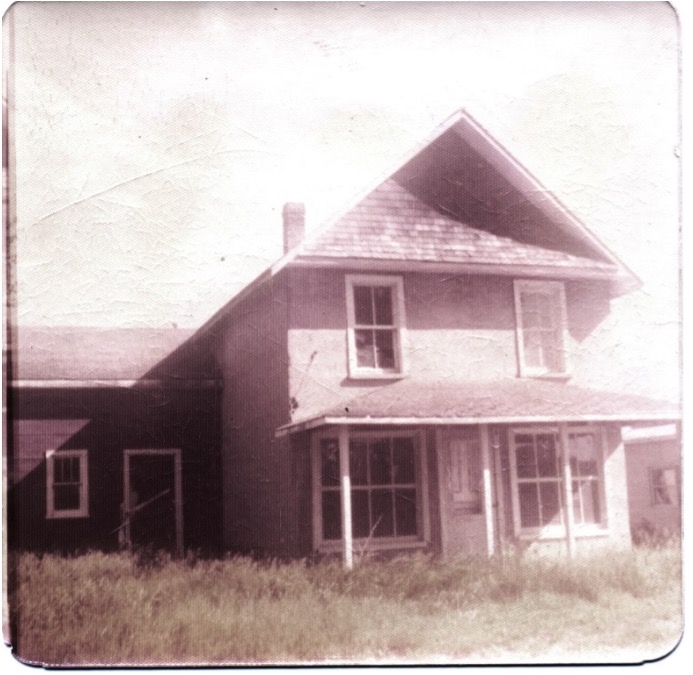
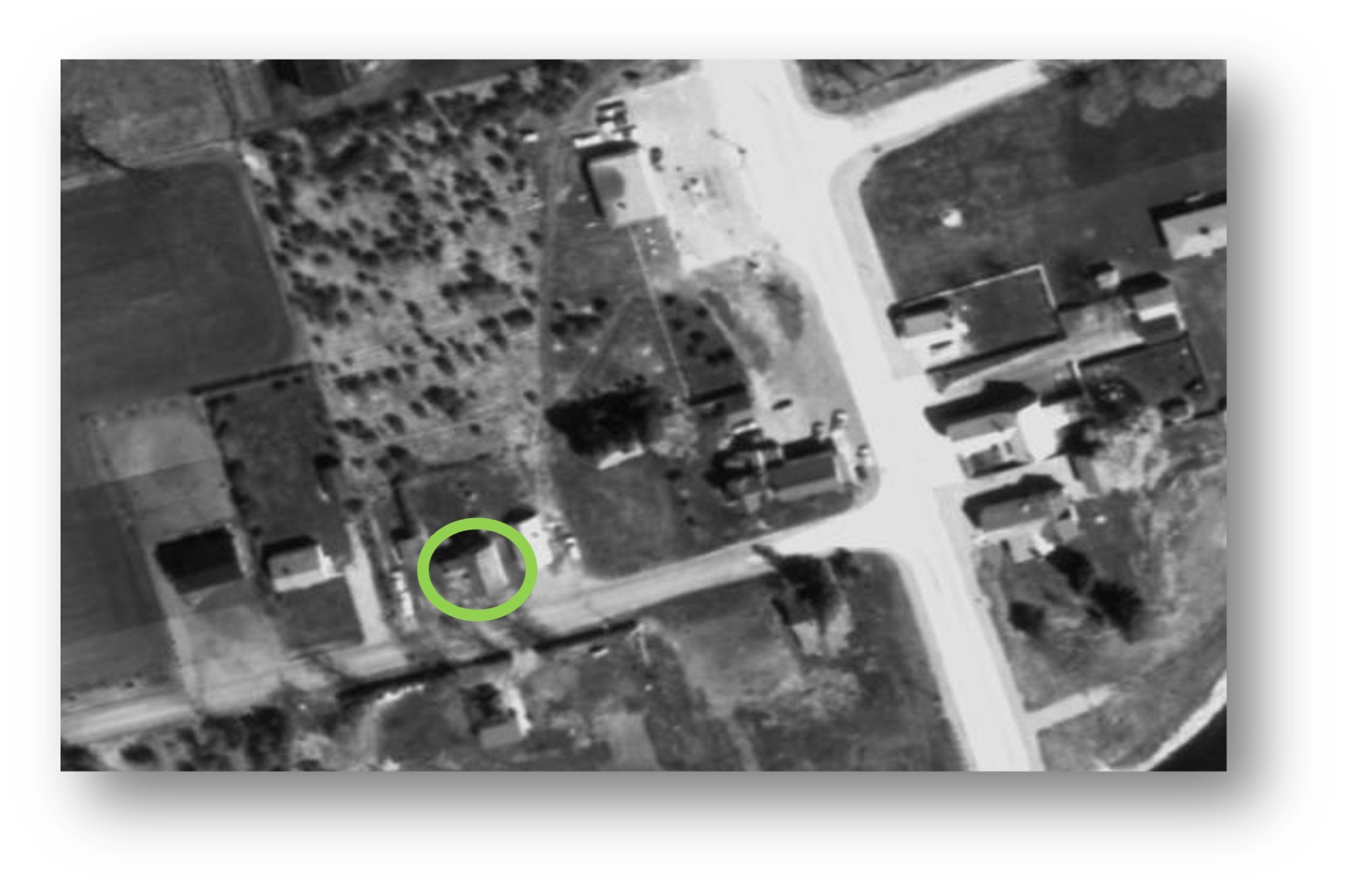
The building was located on the north side of Baldwin Road, just west of Highway #48. Until 1971, this side of the highway was North Gwillimbury Township, while the east side of the highway was Georgina Township. Very little historical background was included with the acquisition, but the GHS recorded that it was used as a residence and a harness shop by a man named Joseph Vanderburg.
Today, the Georgina Pioneer Village knows little more. Land records can shed light on the ownership of a property, but say very little with regard to building tenancy and use.
Thankfully, we had local correspondents writing about local happenings. The Newmarket Era newspaper reported the following:
May 26 1922: Jas. Owen, Ross O’Brien and Joe Vanderburg have buildings very close together. To insure themselves against loss by fire they thought it best to invest in some fire protection. They each purchased a fire extinguisher. No doubt they would be of some help in a conflagration.
October 12 1923: Joseph Vanderburg’s shop and dwelling are quite a pretentious building. The most of the rooms are in the second storey. Joe has to shovel out the money. It costs something to build these times.
November 23 1923: Joe Vanderburg’s new harness shop is finished and he is moving in.
December 21 1923: Who says Baldwin isn’t growing? Joseph Vanderburg is working in the shop attached to his new dwelling. The shop itself is most elegant and well lighted. When the weather gets warm enough to work barehanded they will finish the living rooms of the house. Joseph Vanderberg’s old work shop, after an attempt to move it bodily was torn down and the material toted away. Jas. Owen is moving the market building upon the site of the building just removed.
February 25 1927: Mr. Joseph Vanderburg is home, packing and getting ready to move to their new home at Guelph.
Between 1916 and 1923 Joseph appeared as a non-resident in the tax rolls on a small lot on the east side of Highway #48- the Georgina Township side of Baldwin. His occupation was listed at various times as a labourer, cobbler and saddler.
In 1924, 1925, 1926 he appeared on the tax rolls on the property associated with this building. Actually, he was assessed at ¼ acre of the south part of Lot 12 Concession 8 in North Gwillimbury Township. For now, we must proceed with the assumption that the lot where this building was in situ is the lot that is being referred to in the tax rolls.
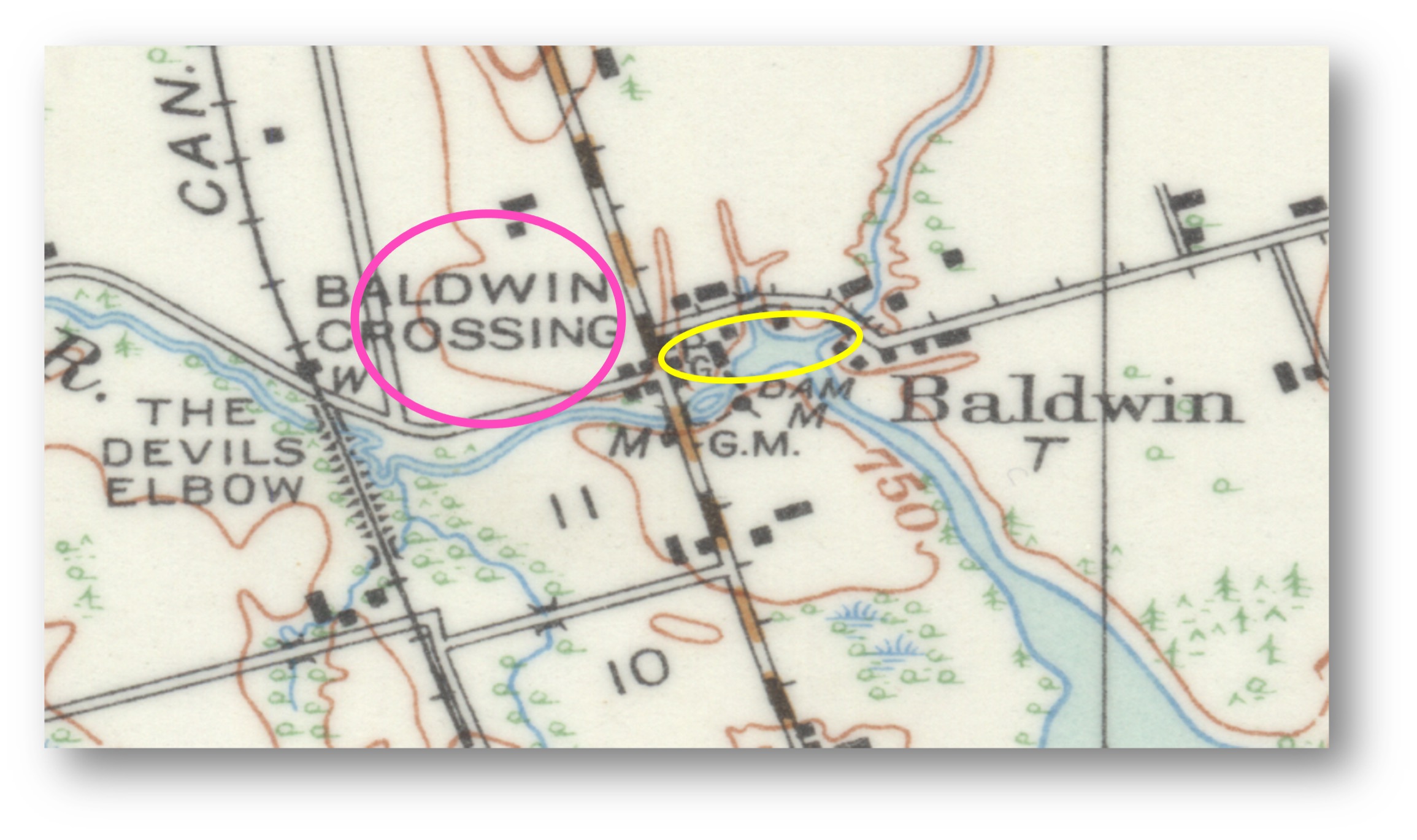
An Interesting Historic Structure: Jackson’s Point Marine Railway goes on display! By Paul Brady
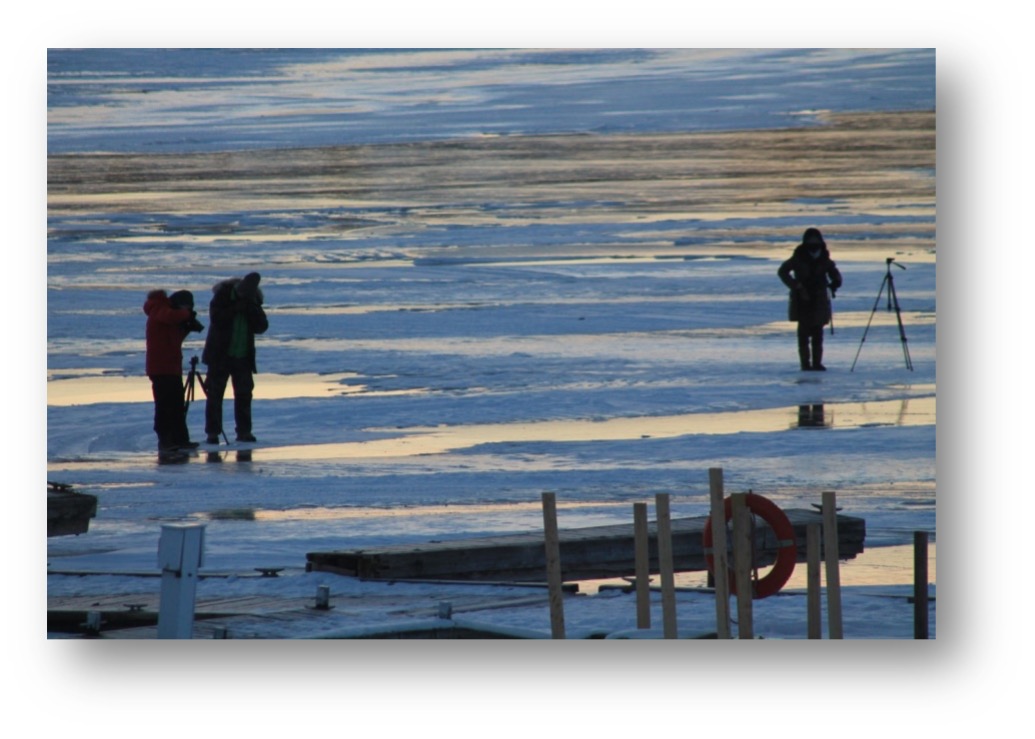
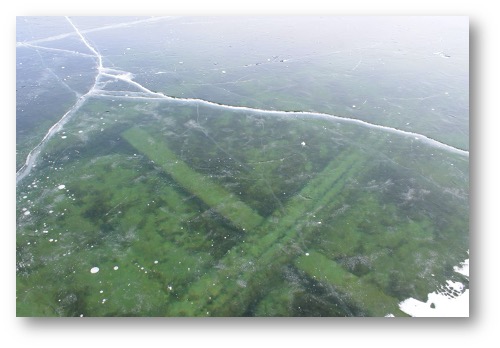
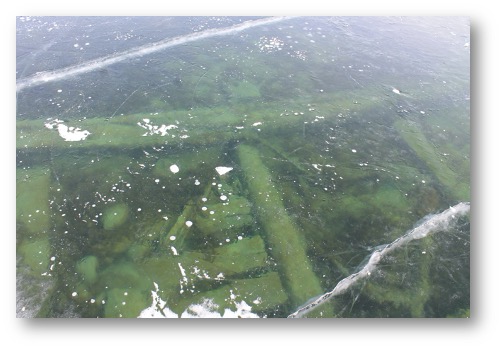
Of Marine Railways, Patent Slips and Slipways: A Brief History
(Adapted and condensed by Bob Holden from https://en.wikipedia.org/wiki/Patent_slip and other sources.)
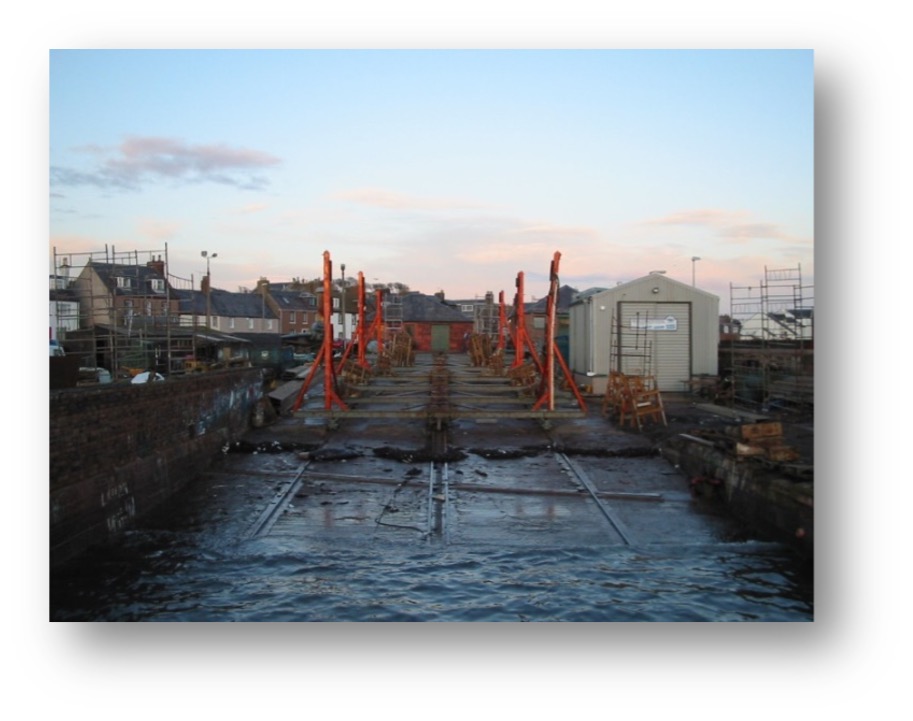
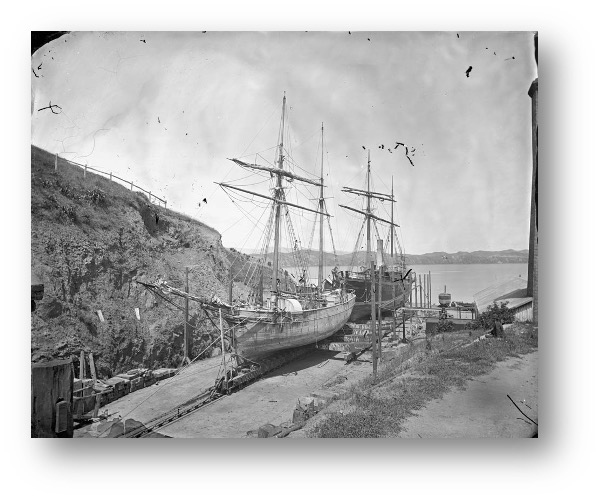
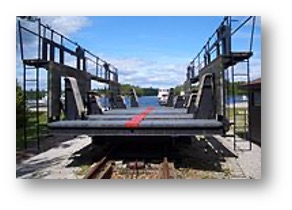
Invented by shipwright Thomas Morton in 1818,[1][2] the patent slipway offered an alternative to the expensive and time-consuming process of dry docking a ship to perform maintenance or repairs to its hull below waterline. The means and mechanisms over time became various, but always include a “cradle” onto which the ship is floated, and a mechanical mechanism for transferring the ship from water to land up an incline. The destination where work was performed was termed the slip.
The earliest patent slipways used teams of men or animals to haul small vessels in wheeled cradles up the slipway. Later blocks and pulleys and large winches linked to heavy hawsers or chains gave a much greater mechanical advantage allowing larger vessels to be hauled up into a slip. As technology improved, animal and human muscle was replaced; first by steam engines, then later with internal combustion or electrical motors allowing much larger vessels to be hauled up the slipways.
1 Prosser, R. B. “Morton, Thomas (1781–1832), shipbuilder and inventor of a ship-building slip”. Oxford Dictionary of National Biography. Oxford University Press.
2 Morton, Thomas & John Barclay (12 March 1824). “Infringement of a patent: notes of a trial before the Jury Court at Edinburgh”. W. Reid & Son.
3 Stuart Cameron (2005) “The Patent Slip”, ClydeSite Magazine, Issue 5, Article 4 (23 March 2003), see [1], accessed 30 June 2014.
Also consulted: https://coms.events/pianc-panama/data/full_papers/full_paper_176.pdf and Crandall Dry Dock Engineers Inc (1967) Railway Dry Docks
Where in Georgina?
Left is our newest mystery location. Unidentified last month, what and where is it? Our last mystery location showed a Metropolitan radial car rounding the curve just north of Deer Park Drive in Roches Point. Dale Taylor once again correctly identified the location after a hint in December’s issue of our newsletter. Photo from Tom Glover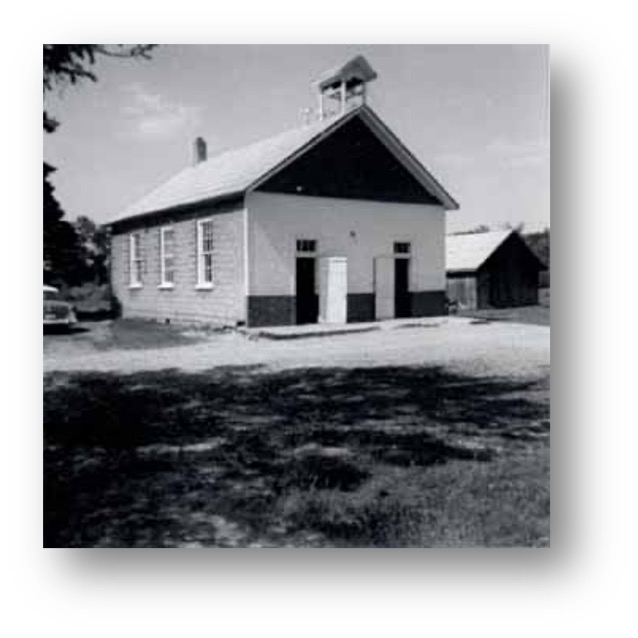
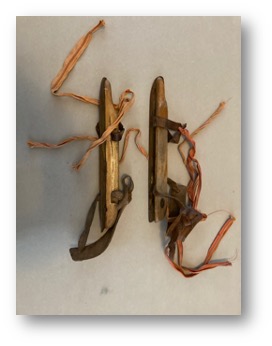
Bring and Brag
It is nice to see the abundance of skating rinks on our lake and rivers this winter. It certainly brings back memories of skating and pick up hockey games on small farm ponds growing up. Here is a picture of skates from earlier days. My older siblings taught me to skate on a little pond behind the barn and I remember wearing similar wooden skates. Very fortunate to obtain a pair a few years ago. Tom Glover (Photo by Tom Glover)
Our Bring and Brag meeting could not take place this year due to Covid. So we have decide to do our sharing in our newsletter. Do you have a Bring and Brag item that you’d like to share? Contact us with a photo, description, and a short story of how it was acquired and we’ll publish it.
News
Update on the Robert Johnston cemetery
There is a heritage cemetery located on the main street of Pefferlaw known locally as the Robert Johnston cemetery. Robert Johnston was a member of the founding family of Pefferlaw back in the 1820s and 12 members of his family are buried in this cemetery. It consists of a small plot of land that once belonged to Robert Johnston’s farm.
Recently, the Georgina Historical Society was advised that the new owner of the property where the cemetery is located was interested in moving the bodies buried there to a new location at the Cooke’s cemetery in Pefferlaw.
The GHS quickly became the champion of the cause to save the Robert Johnston cemetery.
We learned early on that the owner of the cemetery tried to do the right thing and offered to donate the cemetery to the Town of Georgina. However, according to the owner, the Town wanted more land than the owner was prepared to part with and the donation offer fell off the table.
One of the first things the GHS did was petition the Georgina Heritage Committee to designate it as a Heritage Site. And, although they have agreed to do so, this process became stalled once a Notice of Intention appeared in the paper to have the cemetery closed and moved.
With this information, the GHS quickly kicked into high gear and called on members and residents to engage in a letter writing campaign to the Ontario Registrar of Burial Sites requesting that any application to move the graveyard be denied. The response we received was awesome. In addition, we also received generous offers of support from Laura Suchan, Jane Cooper Wilson and Marjorie Stuart with the Ontario Historical Society and Fred Robbins with the York Branch of the Ontario Genealogical Society. All of these individuals have had experience in preserving Ontario’s heritage cemeteries. Thank you!
Next, we were eager to make contact with the owner of the cemetery to find out if the offer to donate the property could be put back on the table. He was a very gracious and polite individual and our conversation was congenial and positive. We both voiced our concerns and end goals which led us to mutually respect each other’s positions. While nothing was settled, the tone of our discussions was upbeat and we did agree to keep the lines of communication open.
At this stage, we think there is room for optimism. Both sides are admitting there is an opportunity to come together to try and find a solution that could result in is a win/win for everyone. We will be staying in touch to discuss further developments as they arise.
You may voice your opinion by writing to:
Registrar of Burial Sites Consumer Services Operations Division Ministry of
Government and Consumer Services
56 Wellesley Street West, 16th Floor, Toronto ON M7A 1C1
Email Nancy.Watkins@ontario.ca
We appreciate your support in this matter.
Events
Due to Covid our events remain on hold. We will keep you updated with any changes to that status.

